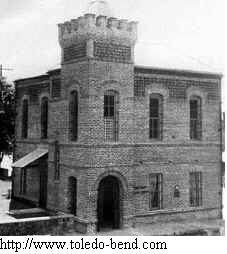Sabine County is located along the Texas and Louisiana borders. Milam was the first county seat but after relocation elections, the county changed the seat to Hemphill in 1858, to honor John Hemphill (Texas Senator and Texas Supreme Court Justice). Sabine County takes its name after its proximity to the Sabine River. The Caddo Indians lived in the territory until Spanish and French expeditions came in the seventeenth and eighteenth centuries. Originally, the land that became Sabine County was a part of the Nacogdoches District. In the 1820s, white settlers set up small communities on the land and began to organize the area. 
The Republic of Texas established Sabine County on December 14, 1837. From that time to the Civil War, the county's population increased. The county was an important resupply location for Confederate troops during the war. Sabine County experienced similar economic downturns during and after the war, but the economy soon began to recover. Farms increased in quantity and farmers began growing cotton, corn, and sweet potatoes, with cotton as the most profitable item.
The period 1880s-1930s marked a transition period where the county's infrastructure exploded because of published newspapers, telephone lines, road construction, and railroads. Electricity found its way into the county by way of the Rural Electrification Agency. The next twenty years were a time of population decreases with the carving out of the Sabine National Forest in 1933, while farm prices and values dropped with the result that agricultural production regressed significantly.
Museum/Historic Site
- Books
- Recollections of John Henry Kirby; Knox Lumber Company; Weches Formation; East Texas Historical Association (Manuscripts)
- Sabine National Forest (Map)
- 1930 Census; Lithologic logs of auger holes and auger samples (Microfilm)
- Sabine County reporter and rambler; Sabine County Citizen (Newspaper)
- Inventory of county archives; Lost of active businesses (Serial)
- Reported gross sales and taxable sales for county (Journal)
Text: http://www.tshaonline.org/handbook/online/articles/hcs01 Handbook of Texas Online, Texas State Historical Association.
To learn more about Sabine County's history check out our Local Voices' writer Rickey Robertson's column "Stories from across the Sabine River: Peason, Peason Ridge, and the Southern Confederacy" on our Local Voices page.